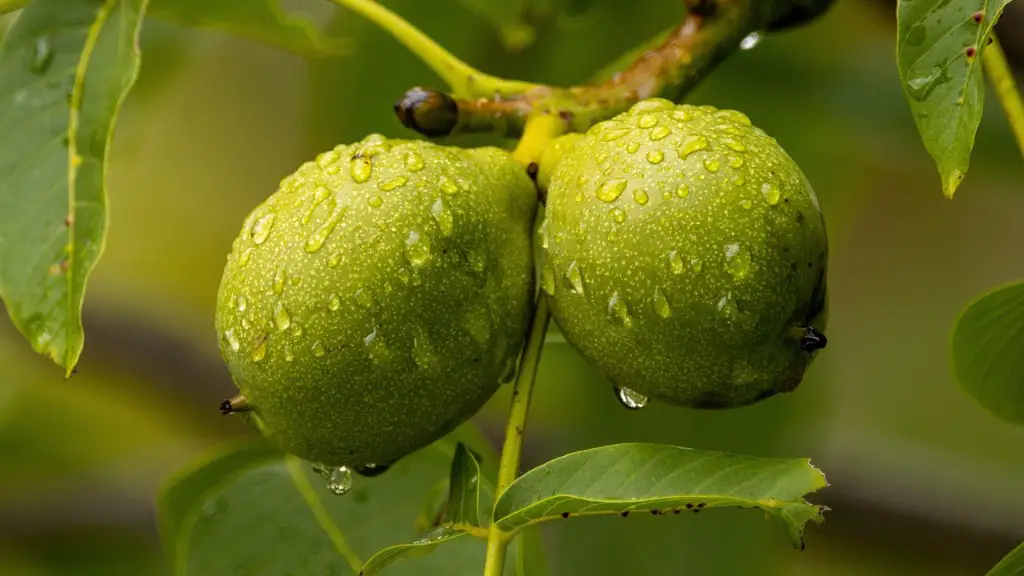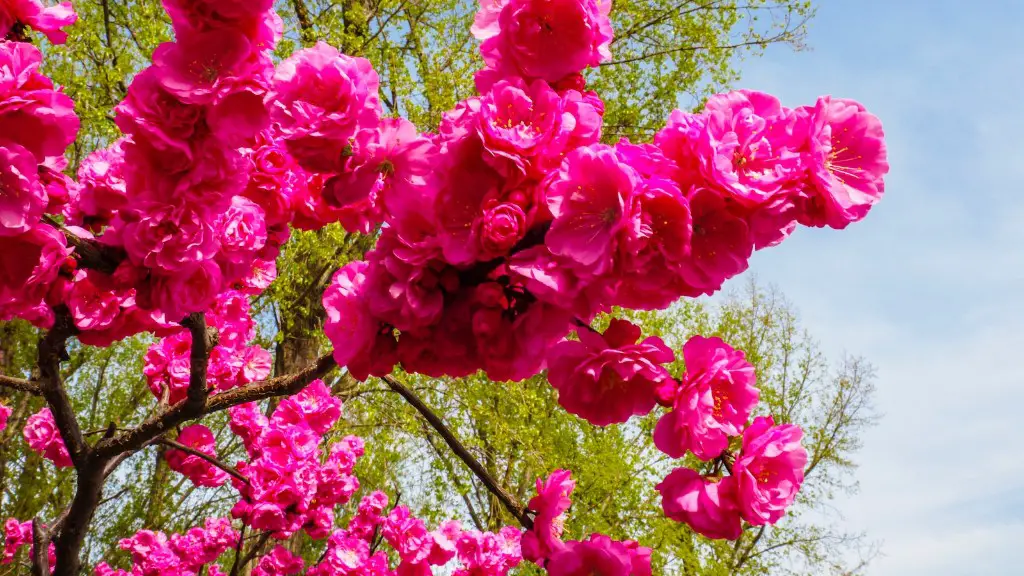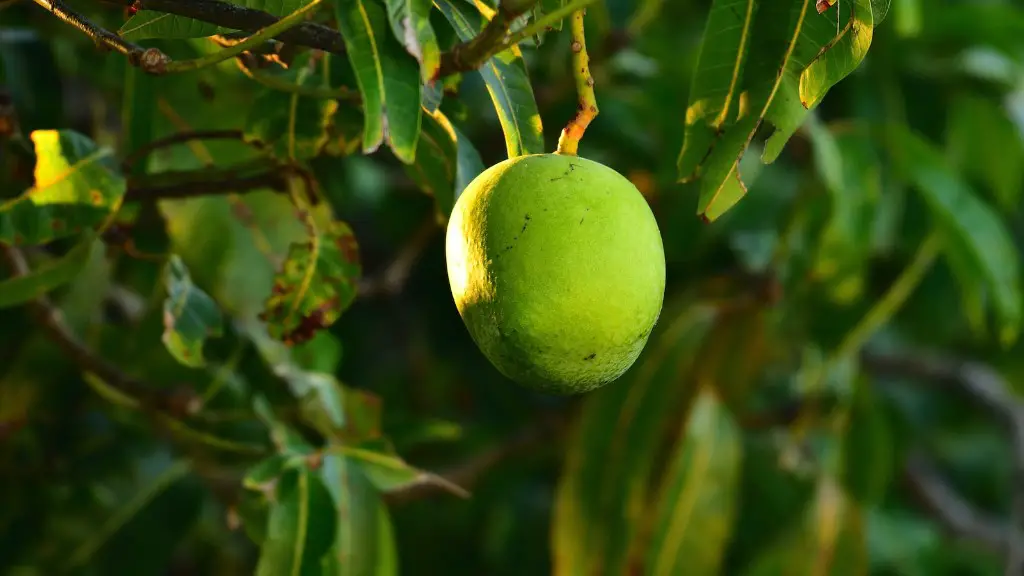Cashew trees are native to Brazil, but they can be grown in other tropical climates. The tree produces a cashew fruit that contains a cashew nut. The nut is encased in a hard shell that is removed before the nut is eaten.
The first step is to find a location where the tree will have room to grow. It is important to make sure the tree has plenty of sunlight and well-draining soil. Once you have found a suitable location, dig a hole that is twice the size of the tree’s root ball. Next, backfill the hole with a mixture of soil and compost. Then, carefully remove the tree from its container and place it in the hole. Make sure the tree is straight before you begin to fill in the hole with soil. Once the hole is filled, water the tree deeply.
How long does it take to grow a cashew tree?
If you want to grow cashew nut trees, keep in mind that it will take two to three years from the time you plant until the time you harvest nuts. Cashew nut trees (Anacardium occidentale) are native to Brazil and grow best in tropical climates.
Cashews are a tropical fruit that requires a frost-free climate to grow. In the United States, they can only be grown in extreme south Florida, Hawaii, and Puerto Rico. There is no commercial production of cashews in the United States, though they are grown in botanical collections and some home landscapes.
Where do cashew trees grow best
Cashew trees require well-drained, sandy loam soils with a slightly acidic pH for optimum growth. Lateritic soils and coastal sands are also suitable. Young plants are sensitive to frost, so care should be taken to protect them from cold weather.
A tree that produces up to 50 kg (around 100 pounds) of nuts a year is considered to be a very productive tree. Cashew trees are known to be particularly productive, and can provide a good source of income for those who grow them.
Are cashew trees hard to grow?
Cashews are a type of tree nut that can be found in tropical climates around the world. The cashew tree is native to Brazil, but it is now grown in many other countries, including India, Vietnam, and the Philippines.
Cashews are relatively easy to grow, and they can be grown from seeds, layering, or grafting. To grow cashews from seeds, you’ll need a mature unshelled nut of not more than 4 months from the time of harvesting. Once you have your seed, you can plant it in a pot or in the ground.
If you’re growing cashews in a pot, make sure to provide good drainage and keep the soil moist but not soggy. Once your cashew tree reaches about 2-3 feet tall, you can start to fertilize it with a balanced fertilizer.
It’s important to protect your cashew tree from pests and diseases. Check the leaves regularly for signs of pests or disease, and treat accordingly.
With proper care, your cashew tree should produce nuts within 3-5 years. Enjoy your homegrown cashews!
If you want to grow a cashew tree, you can either sow the seeds or buy a young tree from a garden center. Growing from seeds is a slower process and it may take up to five years for your cashew tree to yield fruit. For a faster growing process, buy a potted cashew tree.
Which state is the largest producer of cashew nuts?
Maharashtra is India’s largest cashew nut producing state. It is followed by Andhra Pradesh and Odisha.
The cashew tree is native to Brazil, but it is now grown in many tropical countries. The tree produces a fruit called a cashew apple, which is actually the swollen stem of the tree. The cashew apple is edible, but not commonly eaten because it is very acidic. The fruit is popular in some regions of the world, however, and is often made into juices and jams.
The true fruit of the cashew tree is the cashew nut, which grows at the bottom of the cashew apple. Cashew nuts are widely available in grocery stores and are a popular snack food. Although the nuts are technically seeds, they are usually referred to as nuts because of their similar appearance and taste.
Can you eat raw cashews
If you bought “raw” cashews from the store, they are actually steamed cashews that have had the toxins removed. True raw cashews are not safe to eat, as they contain a substance known as urushiol, which is found in poison ivy. Urushiol is toxic, and contact with it can trigger a skin reaction in some people.
Maharashtra is one of the most productive states in India when it comes to cashew production. This is due to the fact that the majority of plantations in the state have been established with high-yielding clonal material. Kerala, another highly productive state, shares a similar trait – most of its plantations have also been established with high-yielding clones.
What soil does a cashew tree need?
Cashew trees are native to Brazil, and they have been grown there for centuries. The best soils for cashew are deep and well-drained sandy loams without a hardpan. Cashew also thrives on pure sandy soils, although mineral deficiencies are more likely to occur. Water stagnation and flooding are not congenial for cashew.
These soils are well-drained and retain moisture, which is essential for the cashew tree. The tree does not tolerate waterlogged or heavy clay soils.
How many times can you harvest cashew in a year
We harvest cashew fruits three times in a year. The first harvest usually takes place around March, the second around June, and the third around September.Cashews are a tropical crop and grow best in climates with little variation in temperature. They are native to Brazil but are now grown in many tropical countries.
This is a great deal on a cashew plant! It’s only Rs 35/piece and it’s in Shimoga. The ID is 13316846988. Get it while you can!
What climate do cashew trees grow in?
The cashew tree grows best in warm-temperate moist climates, tropical climates, or dry locations. It thrives in extreme heat and will be damaged in temperatures below zero degrees C. Anacardium occidentale can tolerate flooding, but benefits from a 3-4 month dry season.
The tree has an estimated economic life span of 45 years. It is grown for its fruits as well as nuts. The kernel is obtained by shelling the roasted nuts. The shells yield oil which is used as medicine, preservative, and water proofing agent.
Do cashew trees need a lot of water
Cashews are one of the more water intensive nuts available. This is because they grow from trees, and trees require a lot of water to grow. This is also true for other nuts that grow from trees, such as almonds, pistachios, and walnuts. So if you’re looking to save water, you might want to avoid these nuts.
Growing a cashew tree from seed germination is an easy process. Just make sure to use fresh cashew seeds that are no more than four months old. Any older and the seed won’t germinate. Once you have your seeds, plant them in a pot with well-draining soil and put them in a warm, sunny spot. Water them regularly and wait for them to sprout!
Final Words
To plant a cashew nut tree, you will need to start with a cashew nut seed. You can plant the seed in a pot of soil and water it regularly, or you can plant it directly in the ground. Once the seed has germinated, you will need to transplant it to a larger pot or to the ground. The tree will need to be watered regularly and given plenty of sunlight. Cashew nut trees can grow up to 20 feet tall, so you will need to provide them with enough space to grow.
Cashew nut trees can be easily planted and grown at home with just a few simple steps. By following these steps, you can have a healthy and productive tree that will provide you with an abundance of cashews for many years to come.




